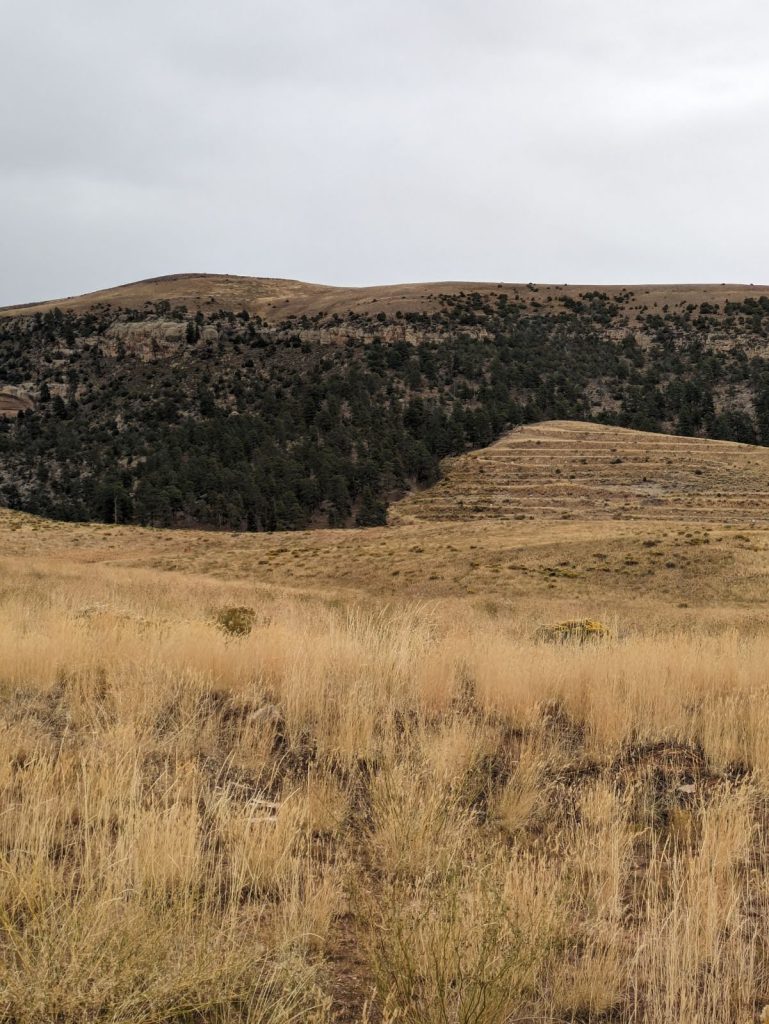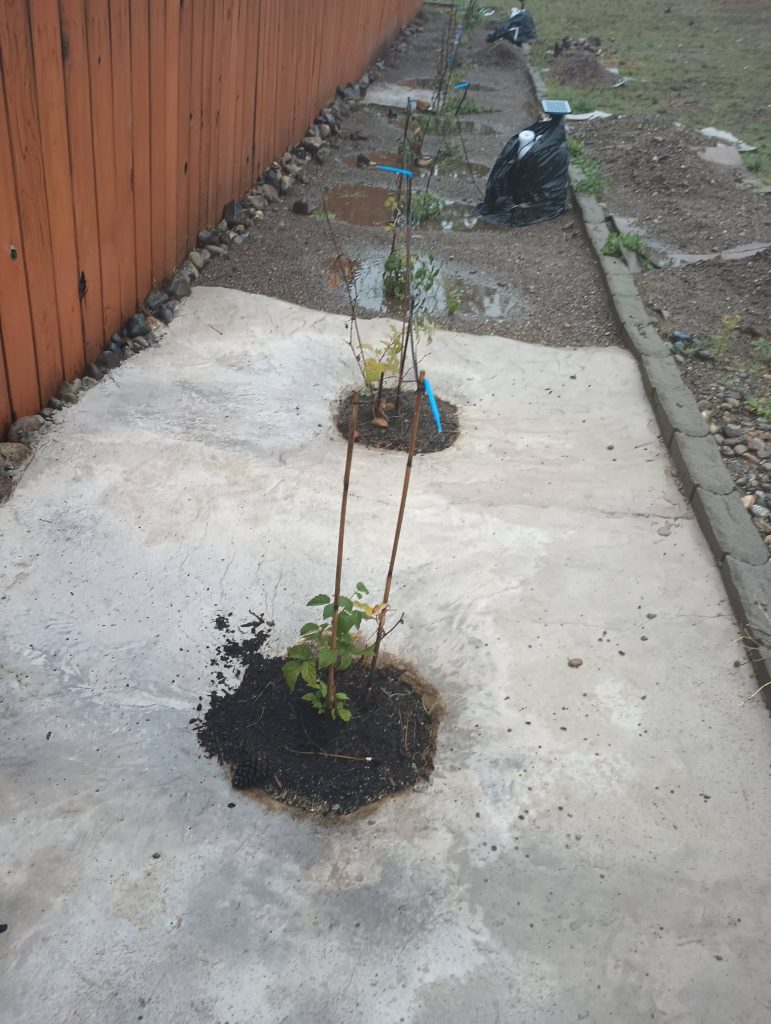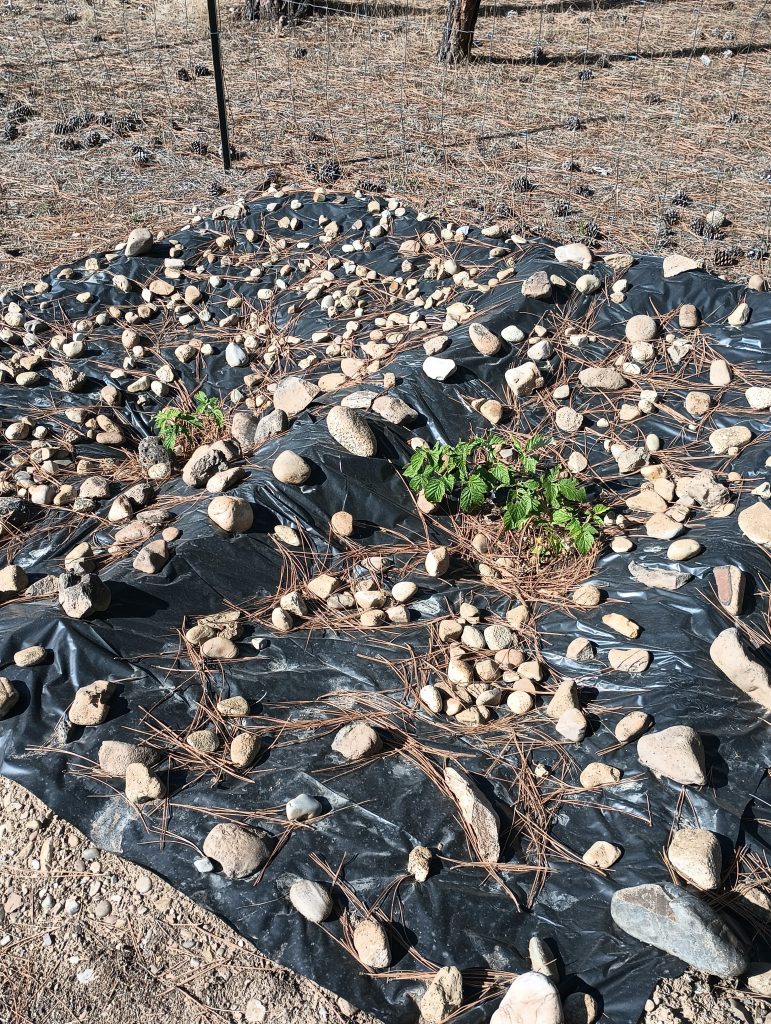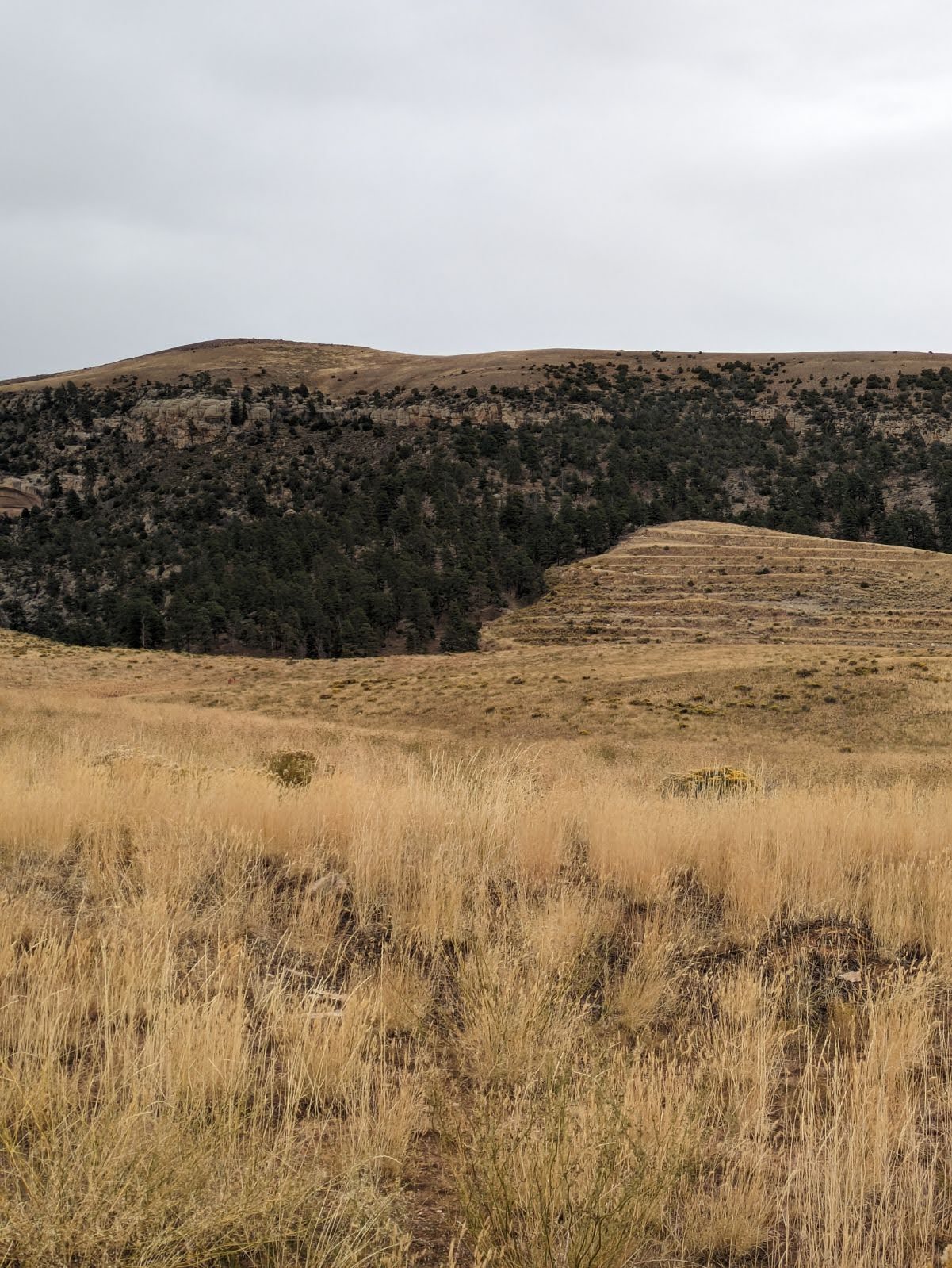Old mining sites often present a significant environmental challenge. These areas, usually stripped of vegetation and natural resources, face issues like soil erosion, contamination, and a disrupted local ecosystem. The introduction of RainAmp S1 technology in such areas can be a game-changer for ecological restoration efforts.
Contact us at info@RainAmp.com
or call (269)-888-1655
Accelerated Healing of Mining Scars:
The visual blight of mining, often a point of public dismay, can heal faster with RainAmp technology. By promoting rapid vegetation growth, these systems help soften the landscape’s rough appearance, replacing barren features with greenery much quicker. This visual transformation can significantly improve public perception of post-mining rehabilitation efforts, fostering community acceptance and support.

Phytoremediation and Control of Groundwater Contamination:
Certain tree species, known for their hyperaccumulation characteristics, can absorb heavy metals and other pollutants from the soil, a process known as phytoremediation. By selecting these species for planting in RainAmp-enhanced sites, the project can actively reduce the level of soil and groundwater contamination left behind by mining activities. This environmentally friendly method of decontamination is vital for the long-term health of the surrounding ecosystems.
Managing Water Resources Through Evapotranspiration:
Trees are natural facilitators of evapotranspiration, releasing water into the atmosphere and reducing the amount on the ground. In a rehabilitated mining site, strategic planting of trees using RainAmp systems can help manage local water resources effectively. By absorbing and subsequently releasing water, these trees can control the site’s moisture levels, reducing runoff that could mobilize contaminants and ensuring less water seeps into potentially polluted deeper soil layers.
Efficient Water Use in Harsh Conditions:
Mining sites are often located in regions with scarce water resources. The innovative RainAmp system, with its capacity to capture, store, and efficiently utilize every drop of rainwater, can establish a stable water source for vegetation in these arid conditions. Its water capture bowls, when installed around the site, can collect rainwater and direct it to where it’s most needed, enabling plants to establish in areas they wouldn’t typically survive.
Stabilizing Soils and Reducing Erosion:
One of the primary concerns with old mining sites is soil erosion and the loss of topsoil. RainAmp’s technology helps mitigate this. By ensuring water is directly available to the vegetation, RainAmp encourages deep root growth, which stabilizes the soil. Furthermore, by reducing surface runoff, RainAmp minimizes soil erosion, protecting the landscape from further degradation.
Promoting Biodiversity:
By creating more hospitable growing conditions, RainAmp allows for a wider variety of plants to thrive. This diversity can attract different animal species, returning the area to a more balanced ecosystem. Over time, this process helps to reintroduce biodiversity to the stripped landscape, as plants and animals that were once native to the area begin to return.
Economic and Environmental Rehabilitation:
Beyond ecological benefits, RainAmp’s system can spur economic activity. As the land becomes more fertile and capable of supporting plant life, it opens opportunities for agricultural ventures such as orchards, vineyards, or community gardens. This not only creates jobs but also contributes to local food production, particularly in areas where agriculture would otherwise be unsustainable.
Reducing Pollutant Runoff and Protecting Water Sources:
Mining often leaves behind pollutants in the soil, which can run off into local water sources. RainAmp’s system helps prevent this runoff by breaking the flow of water, allowing it to be absorbed into the ground where it’s needed most. By capturing rainwater and directing it to deep storage within the bio-sponge, it prevents the water from flowing across the surface and picking up contaminants.

Sustainable Remediation:
RainAmp offers a solution that doesn’t rely on heavy machinery, large amounts of water, or extensive human intervention. Its low-impact, sustainable approach to land rehabilitation aligns with environmental stewardship goals, providing a practical method of site remediation that respects the surrounding environment.
Community Engagement and Education:
Implementing RainAmp systems can serve as a focal point for community engagement and environmental education. Local communities, schools, and environmental groups can participate in planting projects, learning firsthand about sustainable land management and ecological restoration.
Opportunity for Harvestable Timber Production:
Introducing RainAmp systems in old mining sites creates an opportunity to cultivate harvestable lumber crops. Trees grown in these areas, while not suitable for edible produce due to potential contamination, can thrive with RainAmp’s efficient water use. This practice provides an economically viable solution for the land, offering a return on investment through timber sales, while also contributing to the area’s ecological restoration.
Environmentally sustainable and economically valuable
By integrating RainAmp systems into the rehabilitation of old mining sites, we pave the way for these areas to become both environmentally sustainable and economically valuable. Beyond the immediate visual and ecological restoration, these strategies ensure a legacy of health for the local ecosystem, purifying the scars of the past while growing towards a greener future. This holistic approach demonstrates a commitment not just to remediation, but to the thriving renewal of these once-exploited lands.

Contact us at info@RainAmp.com
or call (269)-888-1655
RainAmp’s Bio-sponge: A Beacon of Hope for Barren Lands
At the heart of RainAmp’s S1 system is the bio-sponge, a component typically utilized to ensure moisture retention in drought-stricken agricultural zones. However, its functionality extends far beyond water conservation. The bio-sponge is an amalgamation of materials that not only secure water but also act as a reservoir for essential nutrients. This feature is a game-changer for restoration efforts in old phosphorous mines.
Phosphorous mines, long abandoned, suffer from soil extensively stripped of nutrients, challenging any conventional rehabilitation approach. RainAmp’s bio-sponge introduces a direct-to-root nutrient supply, bypassing the infertile native soil. Infused with a tailored blend of nutrients, the bio-sponge serves as an artificial soil layer, providing plants with the essentials for growth and helping establish a more balanced soil ecosystem conducive to plant development.
Furthermore, the bio-sponge supports microbial life, essential for a functional soil ecosystem. These microorganisms assist in various nutrient cycles, making elements available to plants, thereby enriching the impoverished soil found in abandoned mine areas.
- Nutrient Provision:
- The bio-sponge material in RainAmp systems is usually designed to hold not only water but also essential nutrients. This feature can be especially advantageous in the context of a nutrient-poor site like an abandoned mine, where the soil lacks the basic elements required for plant growth.
- By infusing the bio-sponge with a calculated blend of nutrients, you can directly supply the growing plants with what they need for development, essentially bypassing the impoverished native soil.
- Supporting Microbial Activity:
- Healthy soil isn’t just about nutrients; it’s also about the ecosystem of microorganisms that support plant growth. A bio-sponge can provide a habitat for beneficial bacteria and fungi, helping establish a more supportive environment for plants. These microbes play a role in processes like nitrogen fixation and nutrient solubilization, further enhancing the available nutrients for plants.
- Enhancing Root Development:
- By retaining moisture and providing a consistent source of nutrients, the bio-sponge helps create an environment that fosters robust root growth. In the challenging conditions of an old mine, this support can be crucial. Strong roots contribute to plant health and also play a role in soil stabilization — a significant concern in areas facing erosion and land degradation.
- Sustainable Restoration:
- One of the significant challenges with mine restoration is the long-term sustainability of introduced vegetation. The bio-sponge’s nutrient and water retention capabilities could support plant survival during critical early growth stages and help establish a self-sustaining vegetative cover. Over time, these plants can contribute organic matter back to the soil, helping to build up the native soil’s nutrient levels and overall health.
- Customization to Site Conditions:
- Depending on the specific deficiencies of the soil at a mining site, the nutrient mixture in the bio-sponge can be customized to meet the needs of the local conditions. This bespoke approach increases the effectiveness of the remediation effort, ensuring that the plants receive nutrients that might be completely absent from the native soil.
By using an innovative approach like RainAmp, especially the nutrient-enriched bio-sponge, restoration efforts at old mining sites become more feasible and effective. This method not only improves the success rate of plant establishment but also enhances the recovery speed of these disturbed areas, helping them transition back to natural or intended land uses more quickly.
Challenges remediating old Phosphorous mines
Abandoned phosphorus mines represent a unique environmental challenge. These sites are often characterized by severely degraded land with poor soil quality, altered landscapes, and potential contamination from mining activities. In such contexts, remediation and ecological restoration are crucial, and innovative technologies like RainAmp S1 can play a significant role. Here’s how:
- Soil Restoration and Enhancement:
- Phosphorus mines often leave behind soil that’s severely disrupted and nutrient-poor, unsuitable for plant growth.
- RainAmp’s system can encourage the growth of specific plants (even in harsh conditions) that contribute to soil stability. These plants can gradually improve soil quality through natural processes like nitrogen fixation and organic matter contribution from fallen leaves and plant residues.
- Hydrological Balance Restoration:
- Abandoned mines can disrupt natural water flow and drainage, creating areas of both drought and unintended water accumulation.
- RainAmp’s water conservation technology ensures that water is available to support vegetation growth, vital for soil stabilization and preventing erosion. This sustained vegetation can assist in gradually normalizing local hydrology, including both surface and groundwater aspects.
- Aesthetic and Environmental Recovery:
- Abandoned mine sites are often eyesores and can be community sources of distress, reducing local property values and impacting community mental health.
- The restoration of green space through tree and plant growth supported by RainAmp can enhance the local landscape’s visual appeal, boosting community morale, and potentially increasing surrounding property values.
- Mitigating Environmental Hazards:
- Phosphorus mine sites may contain remnants of toxic substances used in extraction processes or concentrated by the mining process, posing risks to local ecosystems.
- Certain plants are known for their phytoremediation properties, where they absorb and concentrate harmful substances from the soil. Using RainAmp to support such plant species’ growth could mitigate these environmental hazards. These plants can be particularly effective if selected for their tolerance to local conditions and their ability to uptake specific contaminants present.
- Cost-Effective Remediation:
- Traditional remediation approaches can be prohibitively expensive, especially for large, disrupted areas left behind by mines.
- RainAmp offers a potentially more cost-effective approach. By supporting vegetation that contributes to ecosystem recovery, this method may reduce the need for expensive engineering solutions, extensive soil replacement, or ongoing maintenance.
- Wildlife Habitat Restoration:
- The reintroduction of native plants and the restoration of green spaces can also create new or restored habitats for local wildlife, contributing to local biodiversity.
By integrating solutions like RainAmp into a broader remediation strategy, stakeholders can approach the restoration of old phosphorus mines more sustainably and holistically. However, it’s essential that these efforts are paired with thorough planning and consultation with environmental scientists, local authorities, and community representatives to ensure they meet environmental regulations and community needs.
Revolutionizing Environmental Healing: How RainAmp Transforms Abandoned Phosphorous Mines
Once left to the whims of nature, abandoned phosphorous mines epitomize environmental desolation. These remnants of industrial fervor, now stark landscapes, are on the brink of ecological revival thanks to the groundbreaking RainAmp technology. This comprehensive guide explores how RainAmp is not just reclaiming but revolutionizing these terrains, sowing the seeds for sustainable futures.
The Legacy of Phosphorous Mines: Understanding the Damage:
Phosphorous mining, once a boon to global industry, has left a scar across various landscapes. Extraction processes disrupted ecosystems, stripped the soil of nutrients, and left vast expanses of land barren. Conventional restoration efforts often fall short, unable to resuscitate the complex web of life that once thrived. This is where RainAmp steps in, offering a new lease on life for these devastated areas.
RainAmp Technology: A Beacon of Innovation:
RainAmp’s technology is ingeniously simple, reflecting nature’s own methods. The system uses bio-sponge technology infused with essential nutrients, providing a fertile foundation for plant life. The sponge holds moisture in the root zone, crucial for arid, nutrient-poor soils in post-mining landscapes. Rain capture bowls, a signature of RainAmp, collect rainwater, redirecting it to where it’s most needed, allowing for the establishment of pioneer plant species, the harbingers of ecological recovery.
Economic and Environmental Rehabilitation:
A Balancing Act: Cost often undermines conservation efforts. However, RainAmp presents an economically viable solution for large-scale rehabilitation projects. By reducing the need for expensive, ongoing soil treatments and extensive irrigation systems, RainAmp makes environmental stewardship accessible and affordable. This cost-effectiveness encourages corporate entities to invest in ecological restoration, aligning environmental objectives with business interests.
Customizing Restoration: Tackling Diverse Challenges:
Each phosphorous mine site narrates a different tale of ecological degradation. RainAmp acknowledges this, requiring comprehensive environmental assessments before implementation. These evaluations inform the customization of the bio-sponge’s nutrient composition, targeting specific deficiencies. Post-installation monitoring ensures adaptations and interventions can be made, promoting a dynamic healing process.
Nurturing Biodiversity: Beyond Immediate Recovery:
RainAmp’s technology sets the stage for biodiversity by establishing a hospitable environment for various fauna and flora. Insects, birds, and other wildlife follow the resurgence of plant life, contributing to the mine site’s transformation from a barren wasteland to a biodiverse habitat. This return of wildlife is a key indicator of a healthy ecosystem, signaling the success of restoration efforts.
Aligning with Global Sustainability: The Bigger Picture:
The impact of using RainAmp for restoration resonates globally. The approach aligns with international sustainability goals, contributing to a global reduction in water usage, improved soil quality, and climate change mitigation through revived carbon sinks. By integrating RainAmp into restoration projects, companies and governments signal their commitment to global environmental sustainability efforts.
Future Implications: Setting a Precedent for Responsible Mining:
The success of RainAmp in restoring phosphorous mines paves the way for responsible mining practices. Incorporating restoration plans into initial mining agreements highlights the industry’s potential for sustainability, influencing policy, and setting a precedent for future operations.
RainAmp is more than a technological solution for mine restoration; it represents a paradigm shift in how we view and manage industrial legacies. By investing in technologies like RainAmp, we’re not just reclaiming land; we’re reclaiming a promise for a healthier, sustainable future. The transformation of phosphorous mines serves as a testament to human ingenuity and resilience, a narrative of hope sown in the most barren of soils.
Join us in rewriting the story of abandoned mines, from desolate landscapes to thriving ecosystems. Contact us at info@RainAmp.com or (269)-888-1655, and be a part of this revolutionary journey toward environmental restoration and sustainability.
